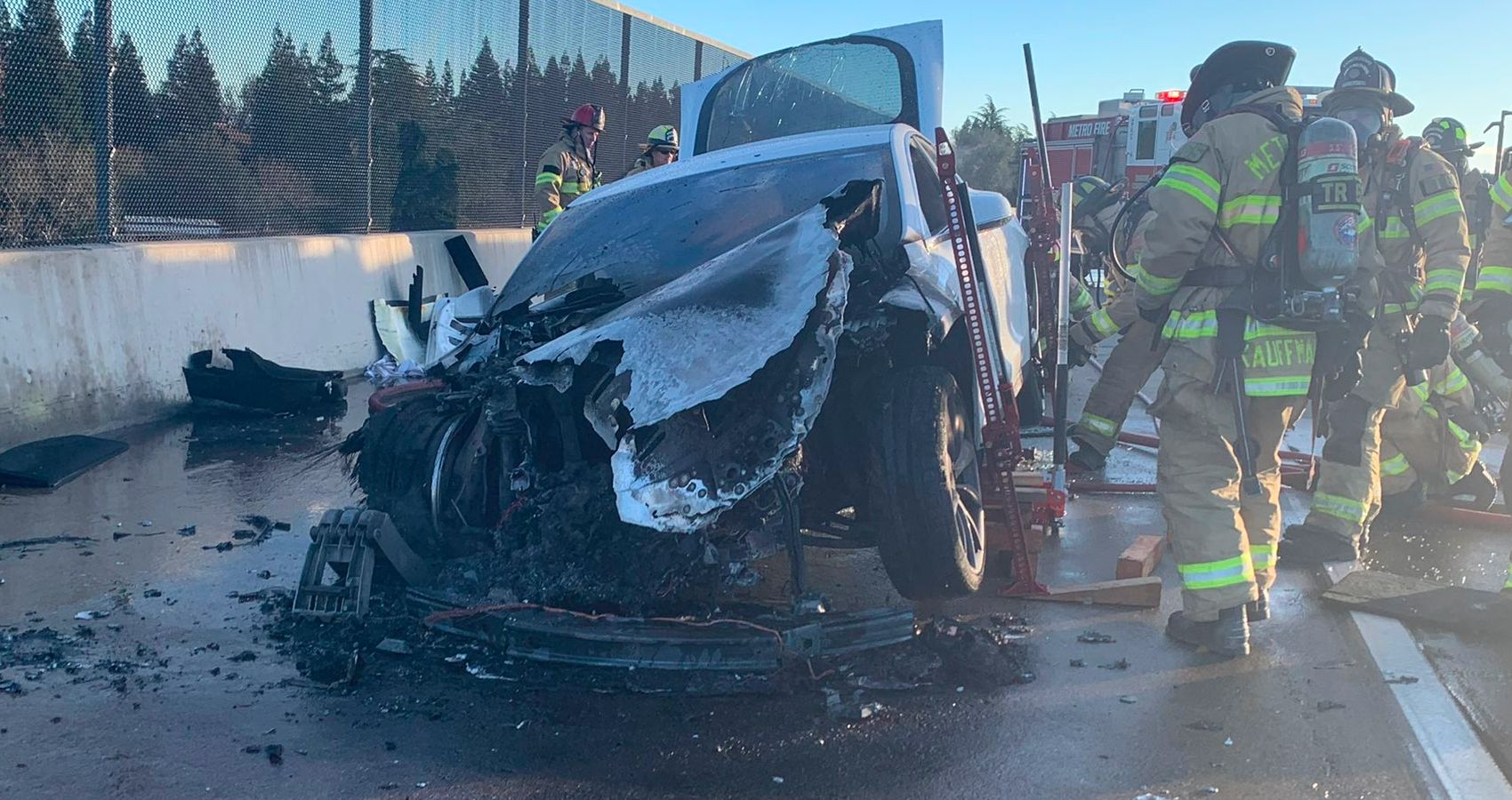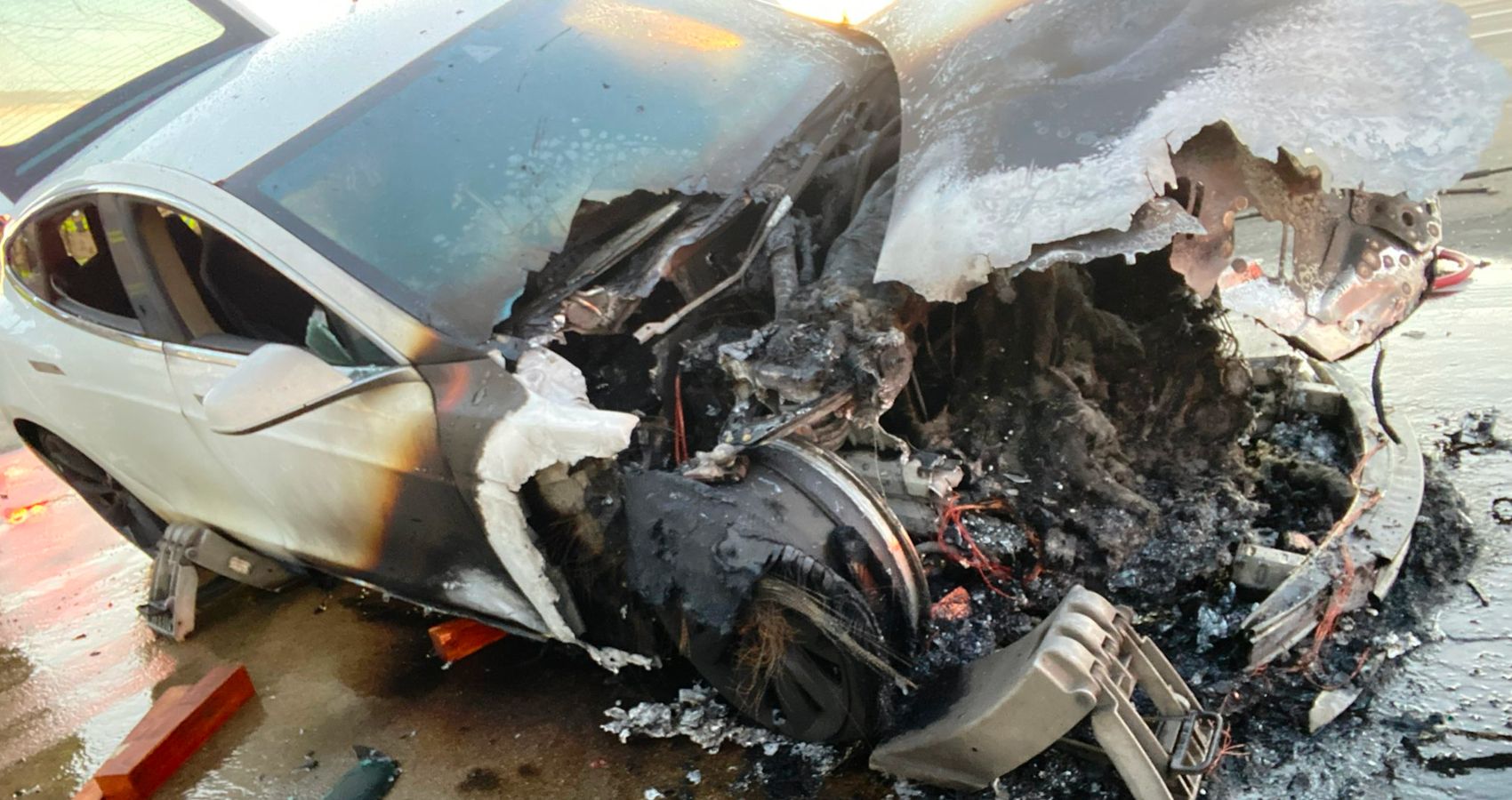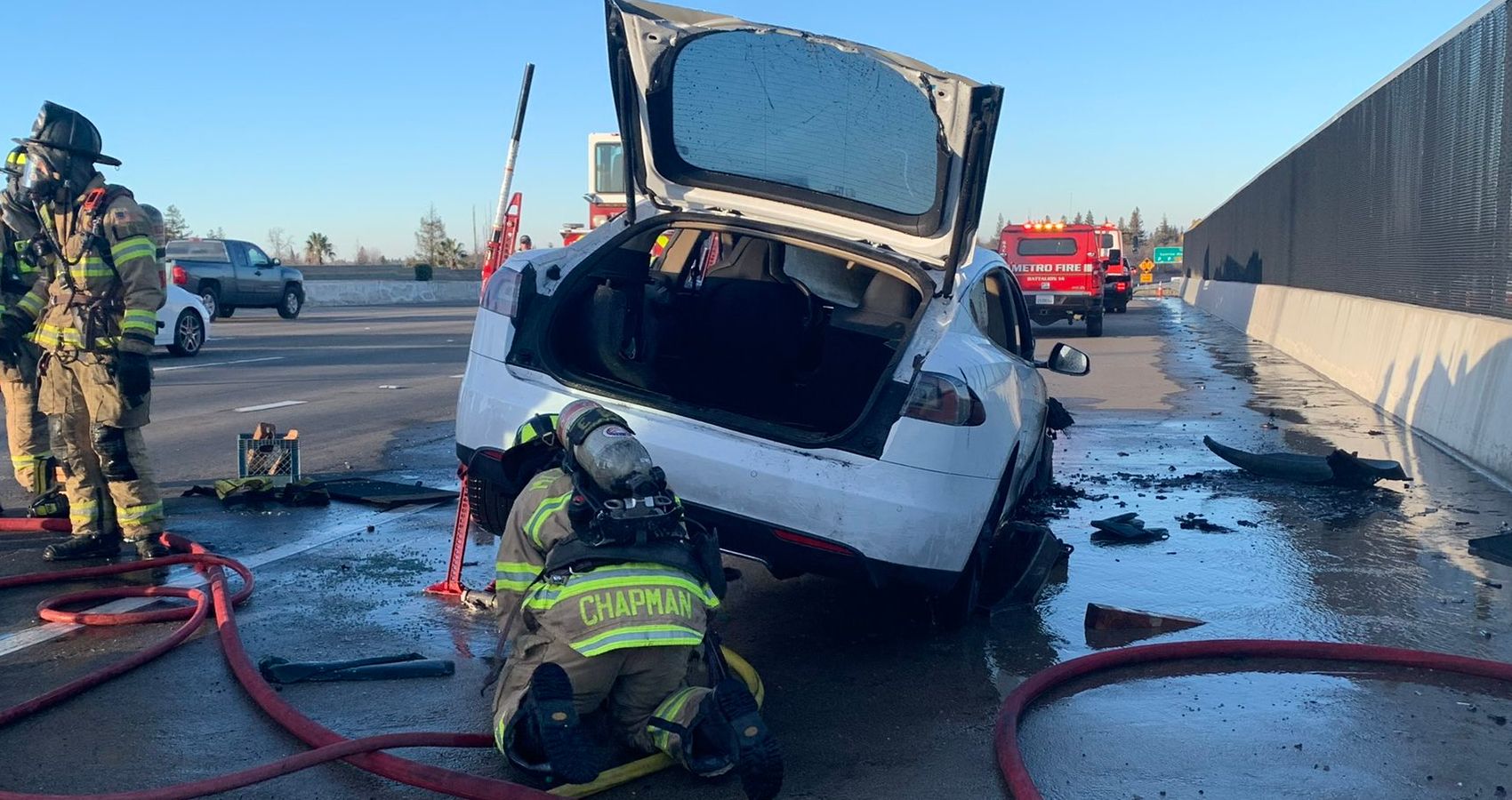Fires are less common among electric vehicles. Yet, as you’ll see with this Tesla, especially a Model S, they can happen. When the flames light, they tend to be more complicated than those of internal combustion vehicles, and to be tamed, they may require quantities of water higher than those used for fires of buildings or houses.This happens because of the battery packs and the energy they contain, which can be very high and then quite difficult to extinguish. Yes, electric vehicles have many control systems to avoid fires, but sometimes these can happen spontaneously. In this case, the Metro Fire of Sacramento intervened, and it took a lot of effort to put out this fire that seemed indomitable. But let’s take a closer look at what happened on this California highway.
A Massive Amount Of Water Needed To Extinguish This Tesla Fire in California
This Tesla Model S was quietly traveling on a highway in California when it suddenly caught fire spontaneously. This is not the first time we see something like this. Then Metro Fire of Sacramento arrived. Extinguishing a fire in an electric vehicle is not exactly the same as calming the flames of a petrol vehicle.
In fact, the process was neither simple nor quick. To extinguish this fire, two fire engines had to be installed, equipped with the necessary tools to lift the vehicle and tame the flames from below. Imagine, more than 6,000 gallons of water were poured to extinguish this fire, far more than it takes to put out a house fire as claimed by the same fire department. This all sounds absurd, doesn’t it? Yet no wonder.
After several suggestions arrived directly from Twitter, the firefighters put out the fire following the official information provided by the Elon Musk brand directly on their website: “If the battery catches fire, is exposed to high heat, or is generating heat or gases, use large amounts of water to cool the battery. It can take between approximately 3,000-8,000 gallons of water, applied directly to the battery, to fully extinguish and cool down a battery fire; always establish or request additional water supply early. If water is not immediately available, use CO2, dry chemicals, or another typical fire-extinguishing agent to fight the fire until water is available”.
Why It Takes So Much Water To Put Out A Tesla Vehicle Fire?
However, fires between electric cars are, on average, much less widespread than those that run between gasoline vehicles, although this data may vary according to many models. The reason for this lies in the very design of these vehicles. They have fewer moving parts and do not contain flammable materials such as petrol or other fuels. They are highly dangerous and can therefore cause fires in the event of leakage or other mechanical defects.
It must be said, then, that these vehicles are manufactured with technical precautions to avoid this type of situation. It is common among electric vehicles to find battery control systems that serve specifically to warn the driver immediately in case of malfunctions that, if not corrected, can lead to a fire. Many cars are built with fireproof or fire-resistant materials just to overcome this problem. But sometimes, it's just not enough, and a car can catch fire.
Remember, EVs are less prone to fire, but as you can see with that Tesla and with other vehicles of the same brand over time, fires can happen and can be even more intense than internal combustion vehicles. To avoid this, always make sure that the vehicle is properly charged. Another useful thing is to definitely have the car checked by a specialist with some consistency. Obviously, then, it is not up to the driver to put out the fire that broke out in their car, but it is good that they know well the procedures to follow in case this happens.
Electric Cars Come With A New Kind Of Firefighting Challenge
The amount of water invested, however incredibly high, is considered average by Tesla estimates. As reported by Metro Fire of Sacramento on Twitter, the vehicle battery compartment spontaneously caught fire while the car was moving. As the battery cells continued to burn, they had to use all that water.
Tesla, then, does not recommend using any kind of foam regarding these fires. In fact, the same Twitter account of Metro Fire explains that “fire foam works to smother oxygen, which breaks the fire triangle of the traditional combustion process. When lithium batteries burn, the cathode material breaks down and releases its own oxygen, so it will continue to burn through the foam”.
Fortunately, in this case, the firefighters were able to intervene in time and, despite the fatigue and the thousands of gallons of water, they managed to put out this fire without anyone getting hurt in the process.
In short, electric vehicles are certainly a very advanced technology, but they are still quite young and fraught with problems. For this reason, in the coming years, it is estimated that alternative ways will be found to extinguish this type of fire so that they require less water.



